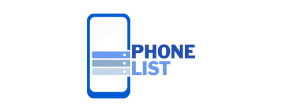In the competitive world of business, knowing what resonates with your audience is crucial. While A/B testing is common in digital marketing, its application to phone gambling database campaigns, such as cold calls or SMS marketing, is equally powerful. By systematically testing different approaches, you can optimize your phone outreach for better engagement, conversion rates, and ultimately, a stronger return on investment.
The Power of A/B Testing in Phone Campaigns
A/B testing, also known as split testing, involves comparing social media tools for lead generation two versions of a single element to see which performs better. Instead of relying on guesswork, A/B testing provides data-driven insights into what truly works for your target audience. For phone campaigns, this means understanding which scripts, offers, or timings lead to the most favorable outcomes.
Why A/B Test Your Phone Campaigns?
- Data-Driven Decisions: Move beyond assumptions and make choices based on concrete performance metrics.
- Improved Conversions: Identify the elements that encourage more calls, appointments, or sales.
- Resource Optimization: Allocate your team’s efforts to strategies that yield the best results, saving time and money.
- Enhanced Customer Experience: Discover what messaging resonates most positively with your audience, leading to better interactions.
Key Elements to A/B Test in Phone Campaigns
The effectiveness of a phone campaign can hinge on various factors. Here are some critical elements you can A/B test:
Cold Calling Scripts
Your opening lines, value propositions, and calls-to-action (CTAs) can significantly impact whether a prospect stays on the line or hangs up.
- Opening Lines: Test a warm, empathetic greeting versus a direct, results-driven statement. Does a question pique more interest than an immediate introduction?
- Value Proposition: Experiment with different ways to articulate the benefits of your product or service. Does emphasizing cost savings or unique features drive more curiosity?
- Call-to-Action (CTA): Compare a direct “schedule a demo” with a softer “let’s talk about your challenges.” Which phrasing leads to more booked meetings?
SMS Marketing Messages
SMS campaigns offer a direct line to your audience, and even small tweaks can lead to substantial improvements.
- Message Content: Test different copy lengths, tones (formal vs. casual), and the inclusion or exclusion of emojis. Do short, punchy messages outperform more detailed ones?
- Offers and Incentives: Compare different discount percentages, free shipping offers, or buy-one-get-one (BOGO) deals. Which incentive drives the highest click-through or conversion rates?
- Timing and Frequency: Experiment with sending messages at different times of the day or on different days of the week. Does a morning text generate more engagement than an evening one? Also, test the frequency of your messages to avoid annoying your audience.
How to Conduct an A/B Test for Phone Campaigns
Running a successful A/B test involves a systematic approach:
1. Define Your Objective and Hypothesis
Clearly state what you want to achieve (e.g., increase call-to-appointment conversion rate by 10%). Formulate a hypothesis about what change will lead to this improvement (e.g., “Changing the opening line to include a specific industry pain point will increase appointments because it immediately demonstrates relevance.”)
2. Isolate Your Variable
For meaningful results, test only one variable at a time. If you’re testing cold call scripts, change only the opening line, keeping the rest of the script consistent.
3. Create Your Variants
Develop two (or more) distinct versions of the variable mobile lead you’re testing. For example, Script A with your current opening line and Script B with the new opening line.
4. Segment Your Audience
Divide your target audience randomly into two equal groups. Group A receives the “control” version (e.g., current script), and Group B receives the “variant” version (e.g., new script). Ensure both groups are large enough to yield statistically significant results.

